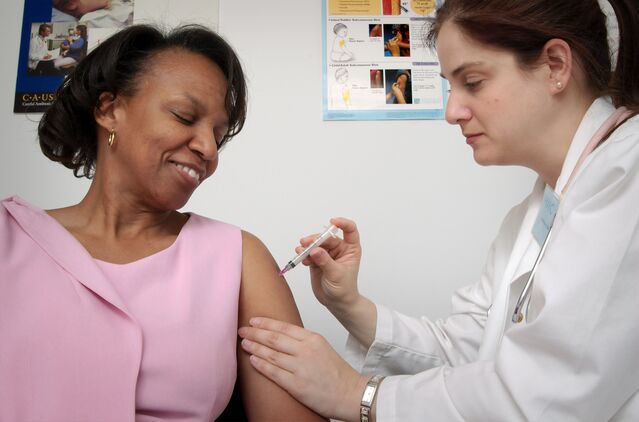Coronavirus Disease 2019
The COVID-19 Vaccine and the Eventual End of the Pandemic
We are all in this together, and the end of the pandemic will be no exception.
Posted October 2, 2020

Throughout the pandemic, we have seen that a few key simple actions can have a huge potential impact on the spread of the virus. Wear a mask. Stay at least six feet away from others. Wash your hands. These are among the things an individual can do.
Parts of the country where these types of guidelines have been promoted and followed have seen rapid and persistent decreases in cases of the virus. This is because a key variable in the overall progress of the pandemic is transmission.
If one person in a million carries the virus, and they, and others with whom they have come into close contact, are effectively isolated from the rest of the population, the chances of transmission become vanishingly low. However, the key to testing, tracing, and isolation as a primary strategy for ending a pandemic depends upon very early and stringent application. Of course, neither occurred, and so the virus was able to get a foothold and spread.
This led to necessary restrictions placed upon all of us, yet even with these measures delayed implementation likely gave the virus more time to spread. A mathematical modeling study posted online in May suggested that tens of thousands of lives could have been saved if lockdown measures had been enacted, “just one week earlier."
So once the horse is out of the barn, what can be done?
There are some who have suggested that because they are willing to accept their own personal risk, guidelines to reduce transmission should not be imposed on them. We know that those without certain pre-existing conditions and risk factors are less likely to have a bad outcome if they become infected. However, this completely misses the point.
This self-centered focus undermines a reality that has become very evident throughout the course of the pandemic: We are all in this together. Furthermore, the impact of the interdependent nature of viral transmission through a population will not end once a vaccine is deployed. In fact, that will just be the start of a new phase where these considerations will become even more critical.

First of all, it is very important to realize that vaccines are rarely foolproof. Some people won’t be able to be vaccinated due to allergies, or other considerations. Furthermore, experts do not expect that the vaccine will actually completely protect all who receive it.
It has been suggested that a vaccine with at least 50 percent effectiveness could be approved for use. In this context, one definition of "effectiveness" could be defined as the odds of preventing an individual from becoming infected. However, it should be remembered that in addition to preventing infection, vaccines can also function to decrease the severity of disease. The FDA has stated that preventing the development of "severe" COVID-19 disease in those who are infected is a suitable metric for measuring the effectiveness of a potential vaccine.
However, the take-home message here really is that we all need to continue to do our parts and think about each other, especially those most vulnerable. This means not simply just getting the vaccine when it is available, counter to the pernicious anti-vaxxer movement which researchers suggest could thwart attempts to end the pandemic, but also continued diligence following all guidelines aimed at reducing the spread of the virus. This perspective was evident in recent comments by Dr. Anthony Fauci, the Director of the National Institute of Allergy and Infectious Diseases, when he stated that a vaccine, "...is not going to eliminate the need to be prudent and careful with our public health measures."
A safe vaccine with a relatively high degree of effectiveness that can be rapidly deployed across large populations will be a key development in the fight against COVID-19. However, it won’t on its own be the end of the story, but a new phase. Until transmission has effectively ceased, we will all need to continue to maintain our efforts and consider how our actions impact others.
It is not clear when a vaccine might become available, or how long it will take to end the pandemic. What is clear is that this new normal is here to stay throughout at least the production, deployment, and vaccination process, and probably considerably longer, as it will take time for the number of infected individuals to fall below the critical threshold for further transmission. So we all have to continue to depend on each other.





